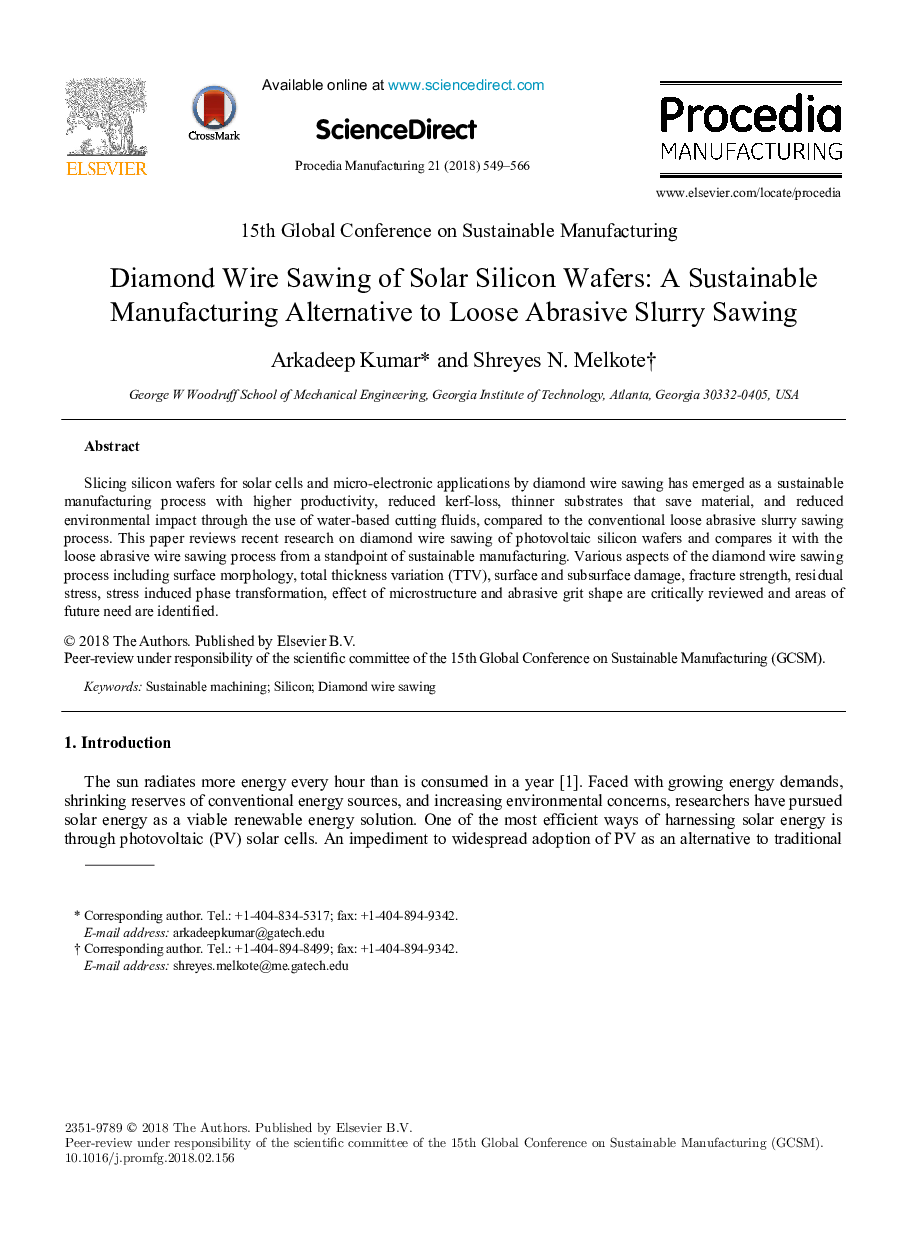| Article ID | Journal | Published Year | Pages | File Type |
|---|---|---|---|---|
| 7545337 | Procedia Manufacturing | 2018 | 18 Pages |
Abstract
Slicing silicon wafers for solar cells and micro-electronic applications by diamond wire sawing has emerged as a sustainable manufacturing process with higher productivity, reduced kerf-loss, thinner substrates that save material, and reduced environmental impact through the use of water-based cutting fluids, compared to the conventional loose abrasive slurry sawing process. This paper reviews recent research on diamond wire sawing of photovoltaic silicon wafers and compares it with the loose abrasive wire sawing process from a standpoint of sustainable manufacturing. Various aspects of the diamond wire sawing process including surface morphology, total thickness variation (TTV), surface and subsurface damage, fracture strength, residual stress, stress induced phase transformation, effect of microstructure and abrasive grit shape are critically reviewed and areas of future need are identified.
Related Topics
Physical Sciences and Engineering
Engineering
Industrial and Manufacturing Engineering
Authors
Arkadeep Kumar, Shreyes N. Melkote,
